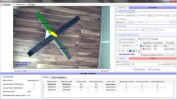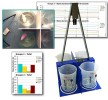Authors
F Sinet, J Zemdegs, M Soty et al
Lab
INSERM U1213, F-69008Lyon, France
Journal
Neuroendocrinology
Abstract
ntroduction: Several studies have suggested that diet, especially one enriched in microbiota-fermented fibers or fat, regulates behavior. The underlying mechanisms are currently unknown. We previously reported that certain macronutrients (fermentable fiber and protein) regulate energy homeostasis via the activation of intestinal gluconeogenesis (IGN), which generates a neural signal to the brain. We hypothesized that these nutriments might control behavior using the same gut-brain circuit. Methods: Wild-type and IGN-deficient mice were fed chow or diets enriched in protein or fiber. Changes in their behavior were assessed using suited tests. Hippocampal neurogenesis, extracellular levels of serotonin and protein expression levels were assessed by immunofluorescence, in vivo dialysis or western-blotting respectively. Rescue of IGN was performed by infusing glucose in the portal vein of IGN-deficient mice. Results: We show here that both fiber- and protein-enriched diets exert beneficial actions on anxiety-like and depressive-like behaviors. These benefits do not occur in mice lacking IGN. Consistently, IGN-deficient mice display hallmarks of depressive-like disorders, including decreased hippocampal neurogenesis, basal hyperactivity and deregulation of the hypothalamic-pituitary-adrenal axis, which are associated with increased expression of the precursor of corticotropin releasing hormone in the hypothalamus and decreased expression of the glucocorticoid receptor in the hippocampus. These neurobiological alterations are corrected by portal glucose infusion mimicking IGN. Conclusion: IGN translates nutritional information allowing the brain to finely coordinate energy metabolism and behavior.
BIOSEB Instruments Used:
Elevated Plus Maze : EPM3C - 3 clicks only ! (BIO-EPM3C),Forced Swimming Test: New FST DUAL SENSOR (BIO-FST-DSM)

 Pain - Thermal Allodynia / Hyperalgesia
Pain - Thermal Allodynia / Hyperalgesia Pain - Spontaneous Pain - Postural Deficit
Pain - Spontaneous Pain - Postural Deficit Pain - Mechanical Allodynia / Hyperalgesia
Pain - Mechanical Allodynia / Hyperalgesia Learning/Memory - Attention - Addiction
Learning/Memory - Attention - Addiction Physiology & Respiratory Research
Physiology & Respiratory Research
 Pain
Pain Central Nervous System (CNS)
Central Nervous System (CNS) Neurodegeneration
Neurodegeneration Sensory system
Sensory system Motor control
Motor control Mood Disorders
Mood Disorders Other disorders
Other disorders Muscular system
Muscular system Joints
Joints Metabolism
Metabolism Cross-disciplinary subjects
Cross-disciplinary subjects Happy new year 2025
Happy new year 2025 
